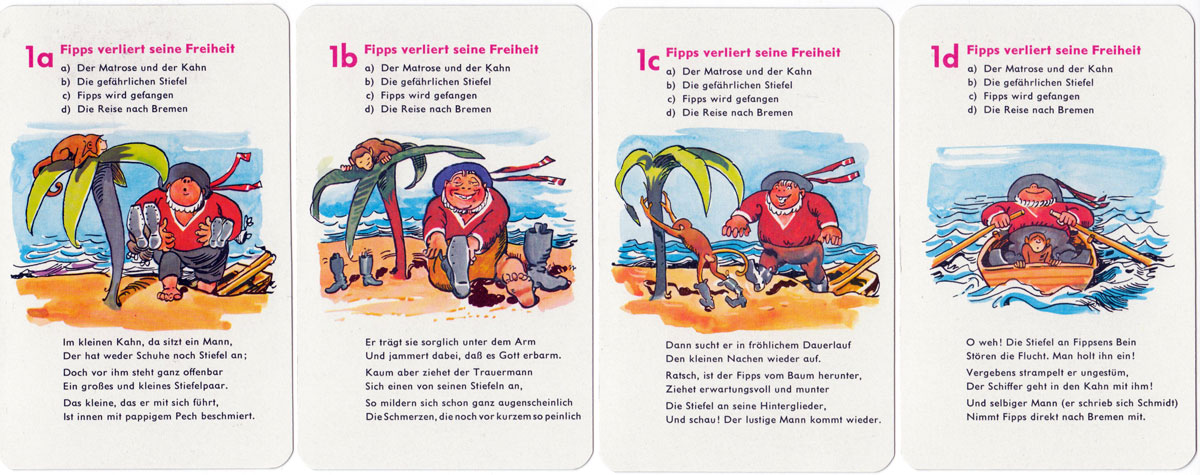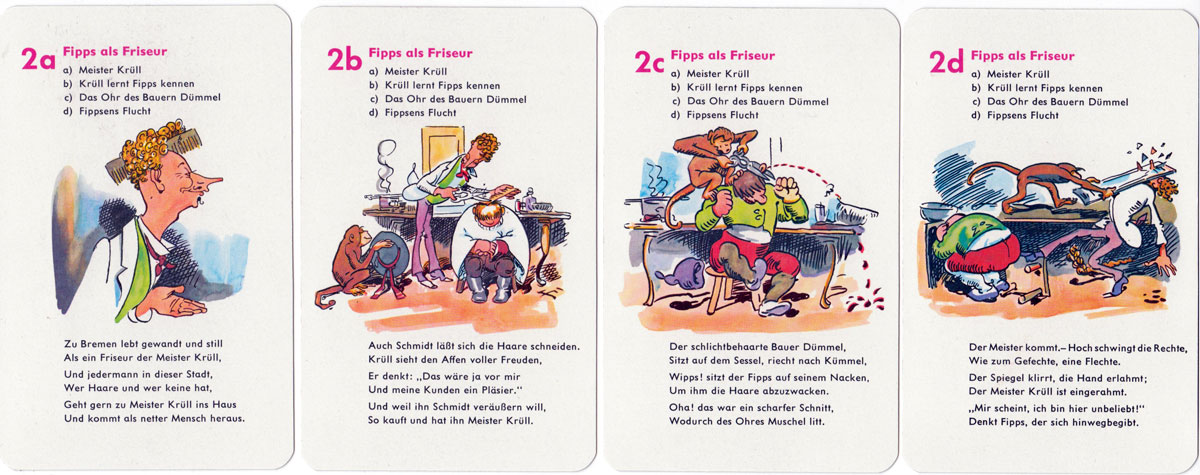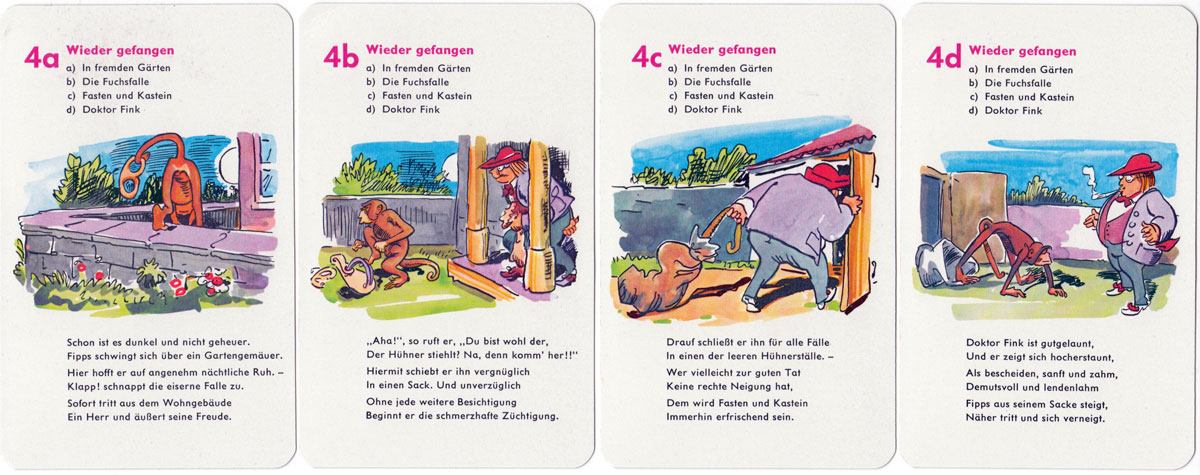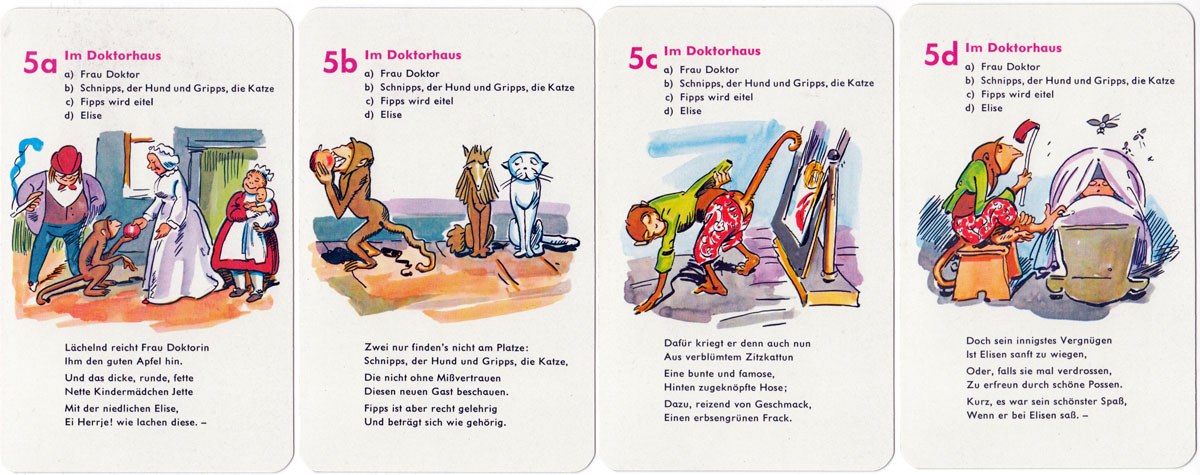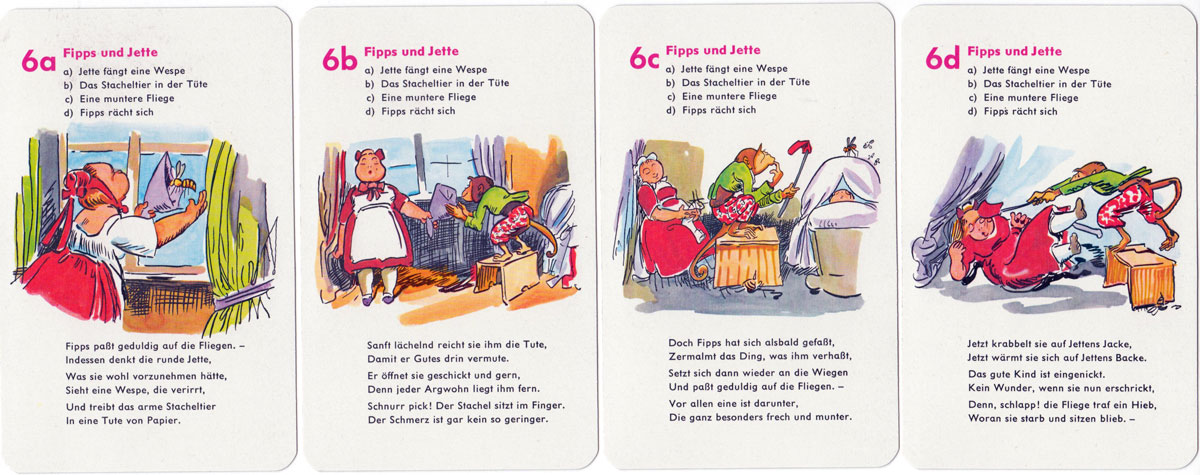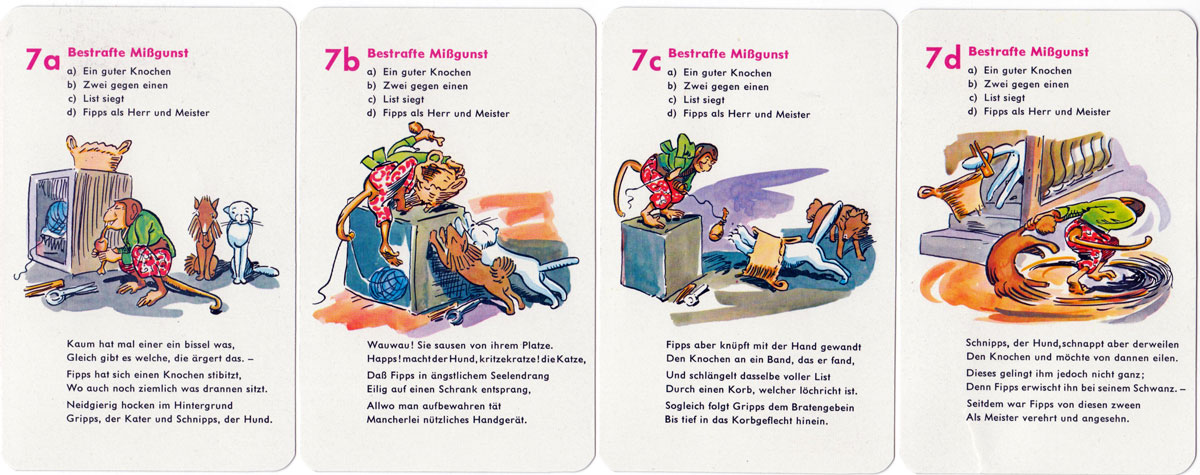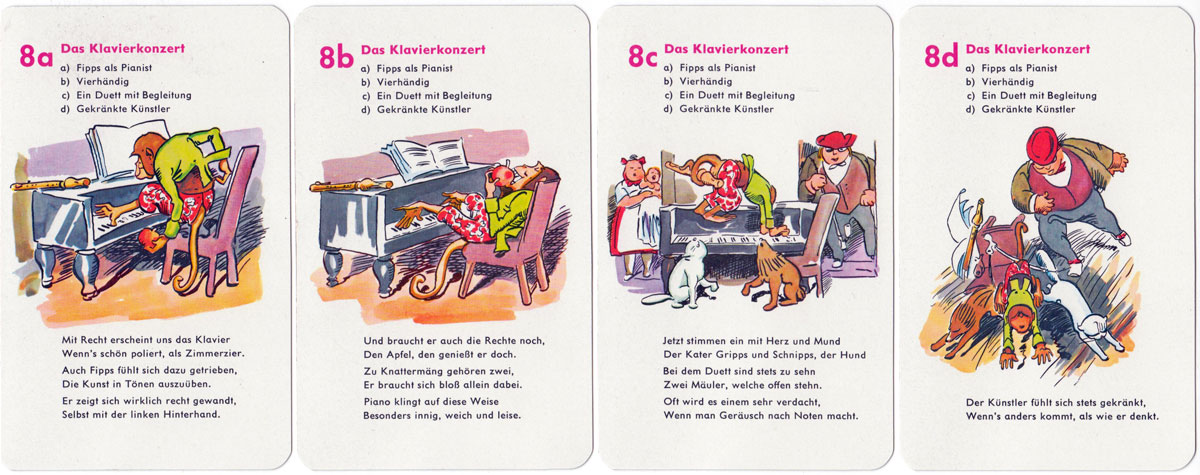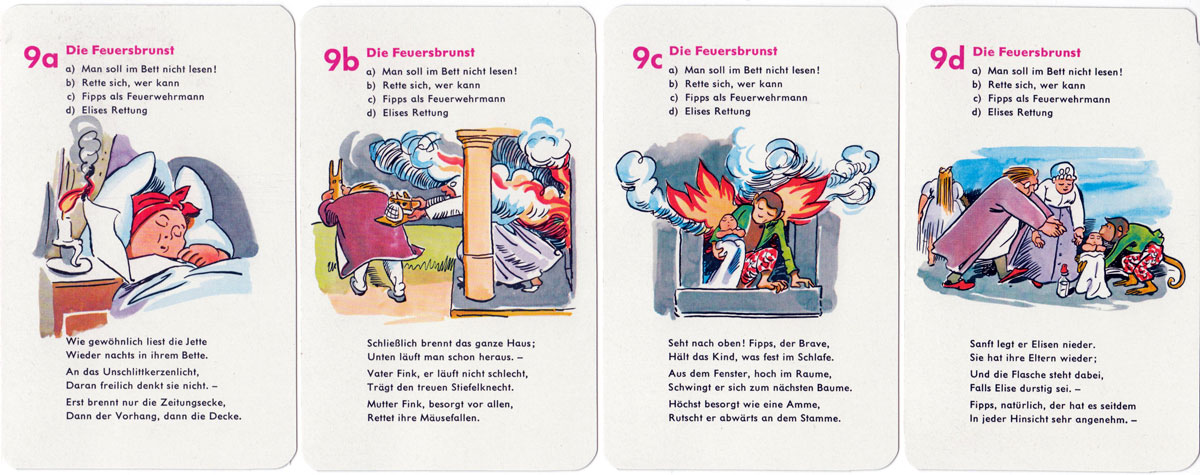Fipps der Affe
“Fipps der Affe“ (Fipps the Ape) quartet game with cartoons by Wilhelm Busch published by Bielefelder Spielkarten GmbH, c.1962.
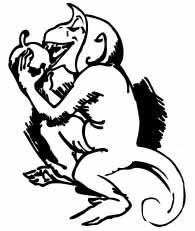
“Fipps der Affe” c.1962
“Fipps der Affe“ (Fipps the Ape) quartet game with cartoons by Wilhelm Busch published by Bielefelder Spielkarten GmbH, c.1962. With the successful publication of Max und Moritz in 1865, Busch became synonymous with stand-alone picture stories marked by humorous caricatures and catchy verse. Fipps the Ape was one of Busch's more popular characters and the stories were first published in 1884 but have enjoyed enduring popularity ever since. Fipps was typically very restless, quickwitted and active, a bit like a naughty schoolboy who enjoys pranks. He enjoyed letting off steam and having many adventures in which power was shifted and roles reversed. Fipps, along with various other ‘funny monkey’ designs, is still popular today on t-shirts!
Above: “Fipps der Affe“ (Fipps the Ape) quartet game with cartoons by Wilhelm Busch published by Bielefelder Spielkarten GmbH, c.1962. 36 cards.
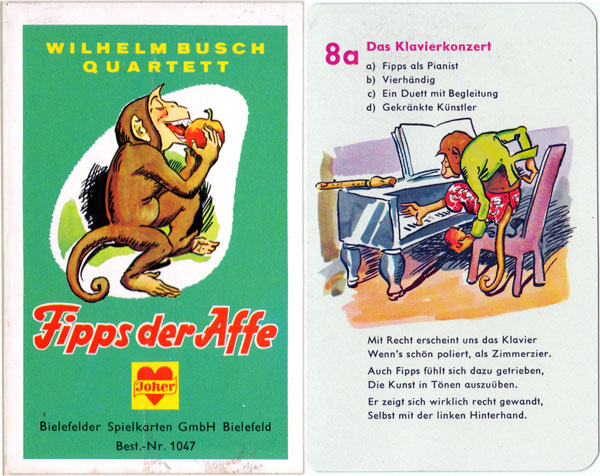
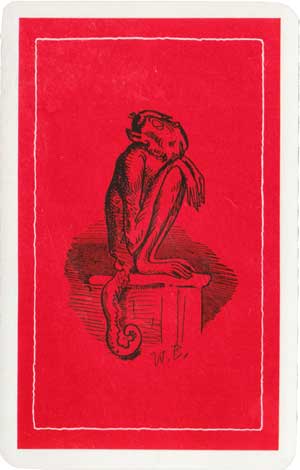
By Rex Pitts (1940-2021)
United Kingdom • Member since January 30, 2009
Rex's main interest was in card games, because, he said, they were cheap and easy to get hold of in his early days of collecting. He is well known for his extensive knowledge of Pepys games and his book is on the bookshelves of many.
His other interest was non-standard playing cards. He also had collections of sheet music, music CDs, models of London buses, London Transport timetables and maps and other objects that intrigued him.
Rex had a chequered career at school. He was expelled twice, on one occasion for smoking! Despite this he trained as a radio engineer and worked for the BBC in the World Service.
Later he moved into sales and worked for a firm that made all kinds of packaging, a job he enjoyed until his retirement. He became an expert on boxes and would always investigate those that held his cards. He could always recognize a box made for Pepys, which were the same as those of Alf Cooke’s Universal Playing Card Company, who printed the card games. This interest changed into an ability to make and mend boxes, which he did with great dexterity. He loved this kind of handicraft work.
His dexterity of hand and eye soon led to his making card games of his own design. He spent hours and hours carefully cutting them out and colouring them by hand.

Related Articles
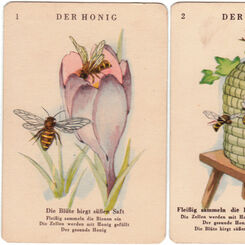
So Fängt Es An
“So Fängt Es An” beautifully illustrated by M. Neugebauer, published by Helingsche Verlagsanstalt.
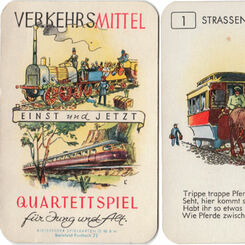
Verkehrsmittel Einst und Jetzt
“Verkehrsmittel Einst und Jetzt” transport quartet game by Bielefelder Spielkarten Fabrik GmbH, 1949...
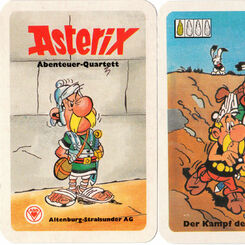
Asterix Abenteuer
Asterix Adventure quartet game by ASS, 1989.
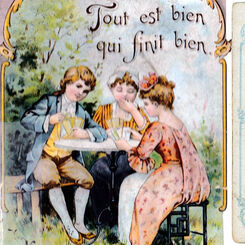
Tout Est Bien Qui Finit Bien
‘Tout Est Bien Qui Finit Bien’ family card game by Dondorf.
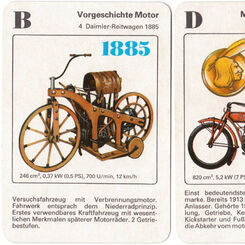
Geschichte des Motorrades
History of Motorcycles quartet published by Verlag für Lehrmittel Pößneck, 1989.

Märchen-Quartett
Märchen-Quartett (Fairy Tales) illustrated by J. P. Werth and published by J. W. Spear & Söhne, c.19...
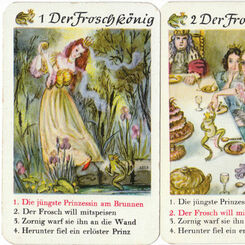
Märchenquartett
Fairy Tales quartet designed by Annemarie Gramberg, published by Vereinigte Altenburger und Stralsun...
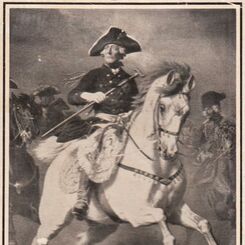
Deutsche Geschichte
German History Quartet published by Otto Maier Verlag Ravensburg, c.1930-35.
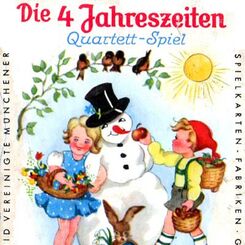
Die 4 Jahreszeiten
Die 4 Jahreszeiten Quartett-Spiel illustrated by Anneliese Tesdorpf, published by F X Schmid, 1950....
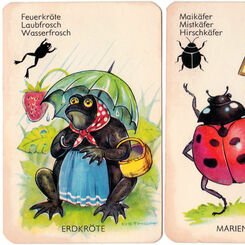
Kleine Tierwelt
“Kleine Tierwelt” wildlife quartet game designed by Heinz Osthoff, published by Bielefelder Spielkar...

Fussball Quartett
Fussball Quartett by Bielefelder Spielkarten GmbH, c.1950.
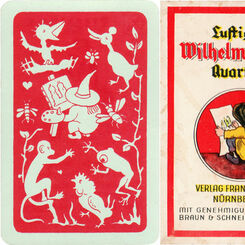
Lustiges Quartett
Lustiges Quartett Wilhelm Busch published by Franz Schmidt, Nuremberg, 1937.
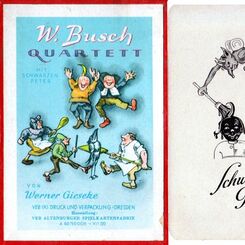
Schwarzer Peter Quartett
“Schwarzer Peter Quartett” game published by VEB Altenburger Spielkartenfabrik with cartoons by Wilh...

Der Lohn des Fleisses
“Der Lohn des Fleisses”, a children's card game designed by Wilhelm Busch (1832-1908).
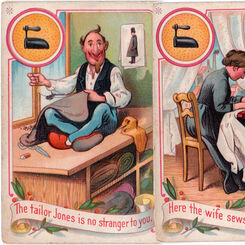
Humouristic Quartett
“Humouristic Quartett” families game produced by Adolf Sala of Berlin.
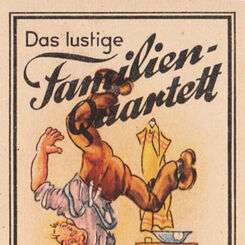
Das Lustige Familien Quartett
“Das Lustige Familien Quartett” published by Eugen Schmidt K.G., Dresden, c.1930s
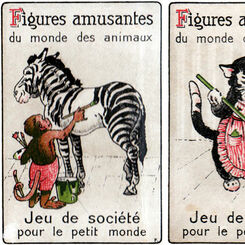
Figures Amusantes
French language edition of a children's quartet game published by B. Dondorf, c.1900, consisting of ...
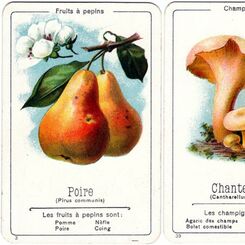
Fruits et Légumes
The beautiful artwork in Dondorf's “Fruits et Légumes” quartet game reminds us of the benefits of na...
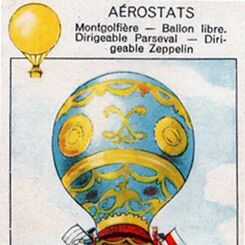
Le Progrès de la Circulation
The beautiful images in this quartet game published by Jeux Spear in 1933 depict the progress of tra...
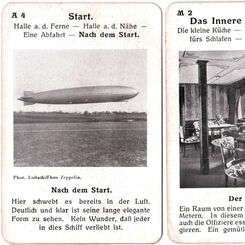
Graf Zeppelin
A card game commemorating the first round the world flight by the Graf Zeppelin, published by J.W. S...
Most Popular
Our top articles from the past 60 days


